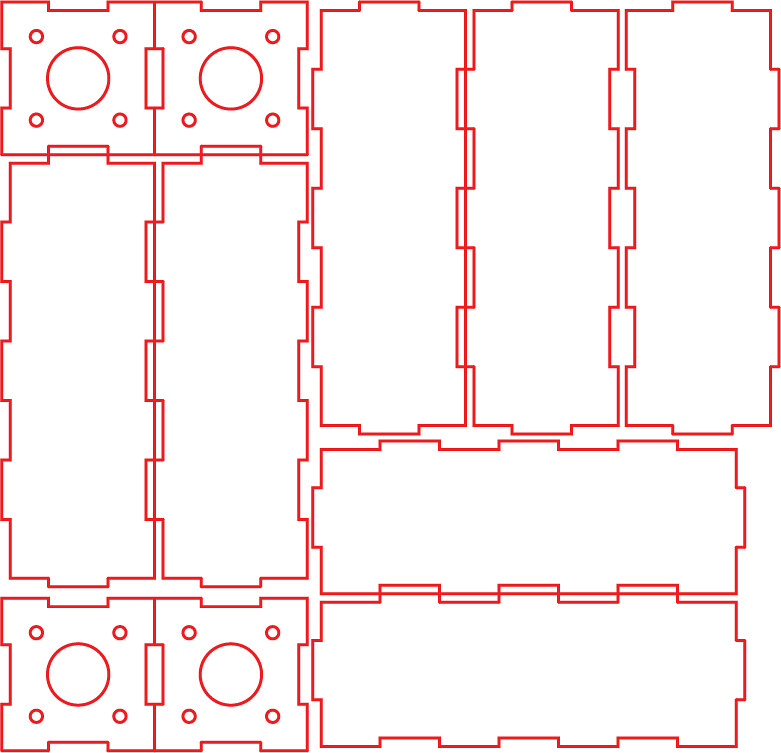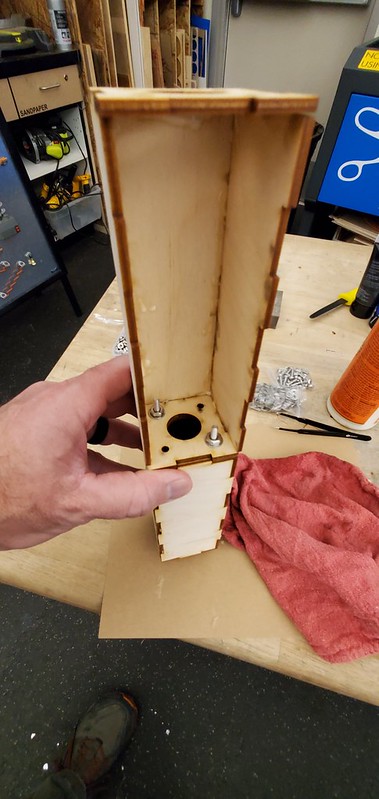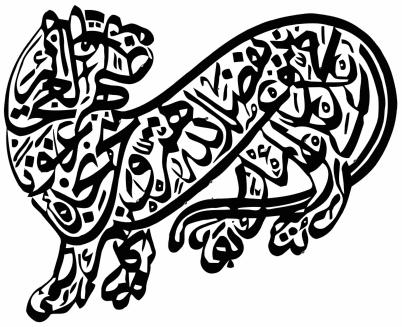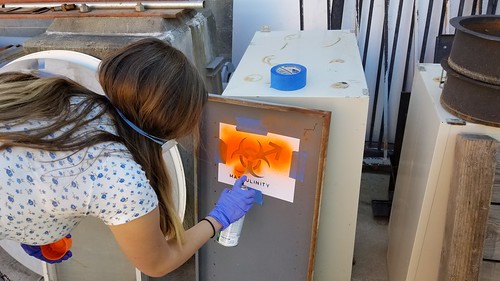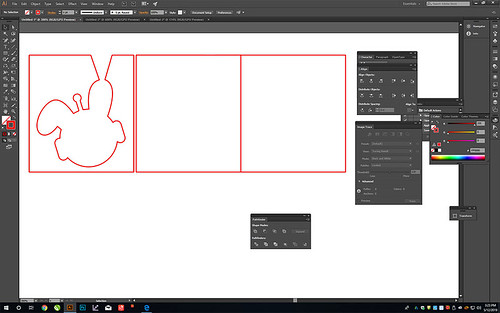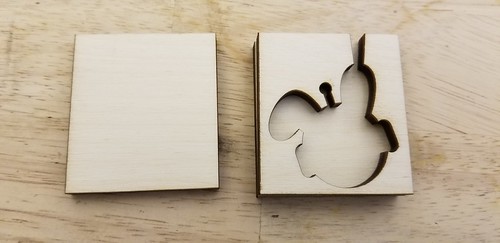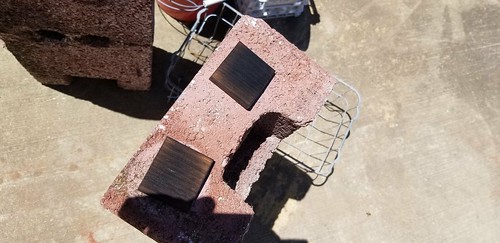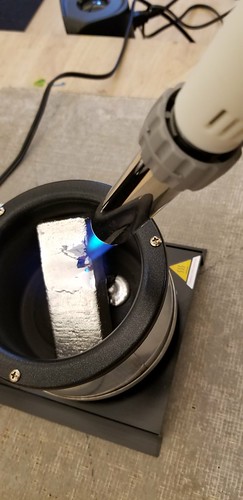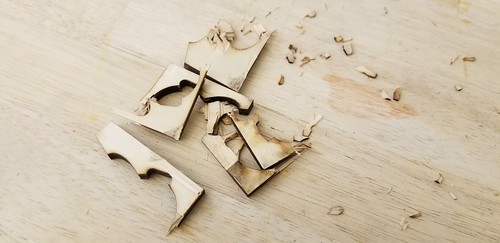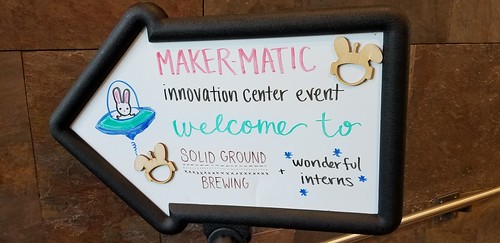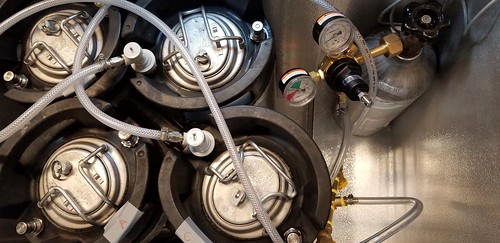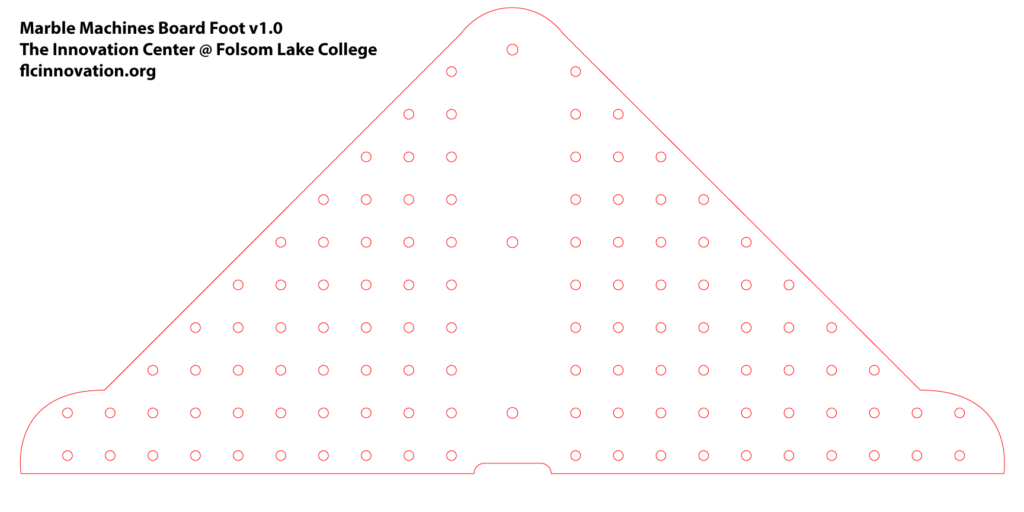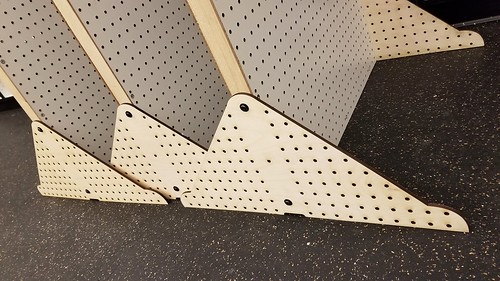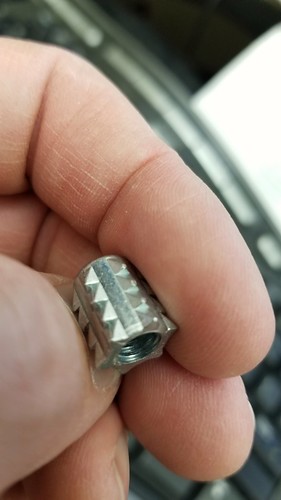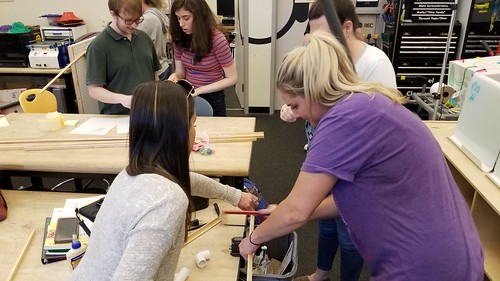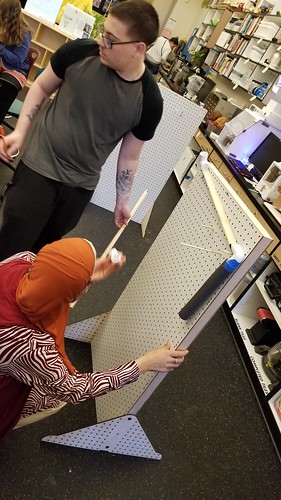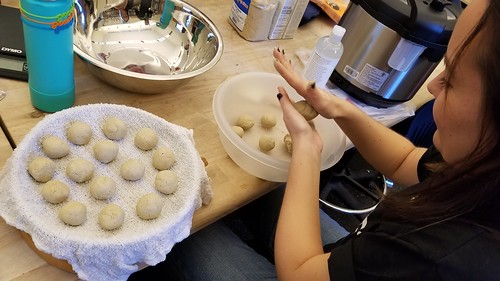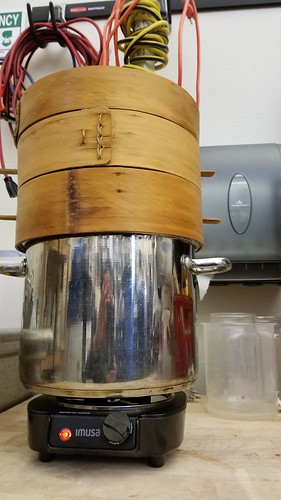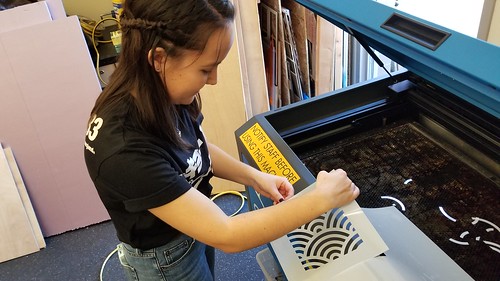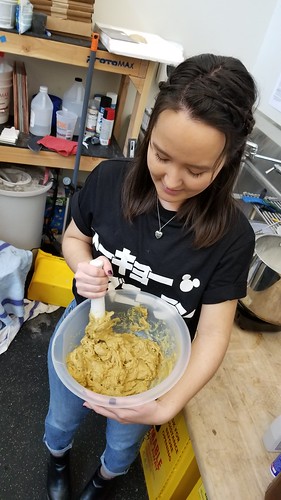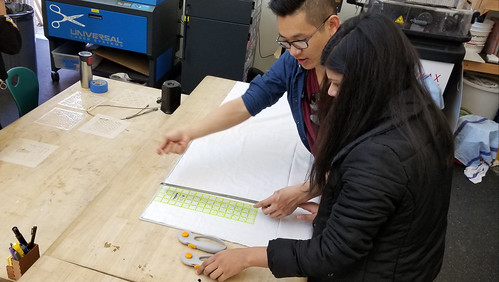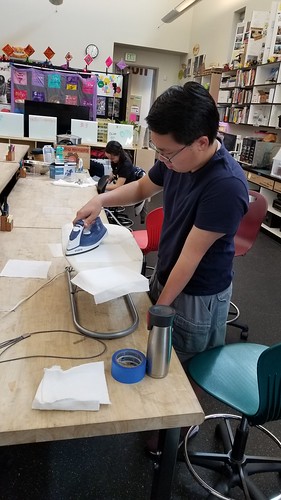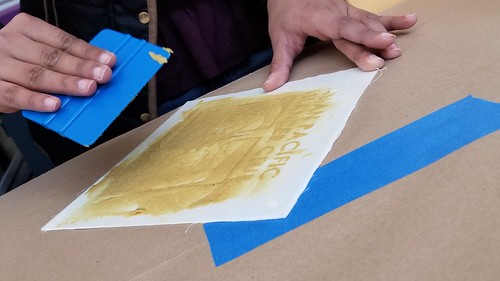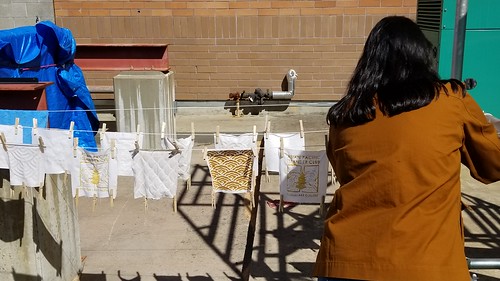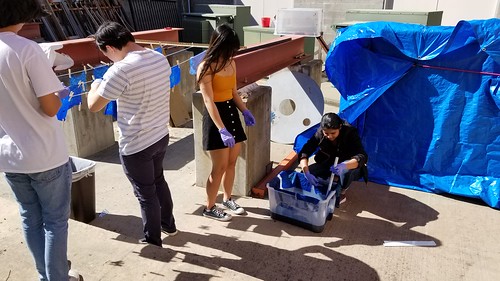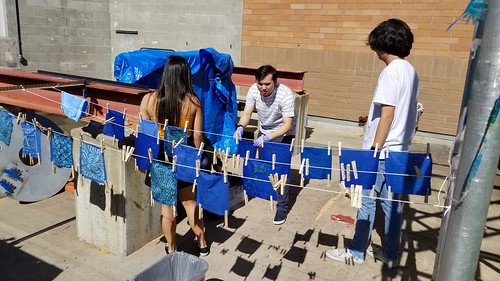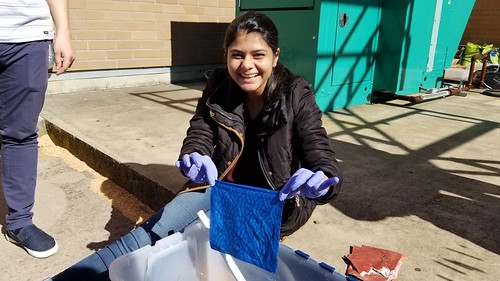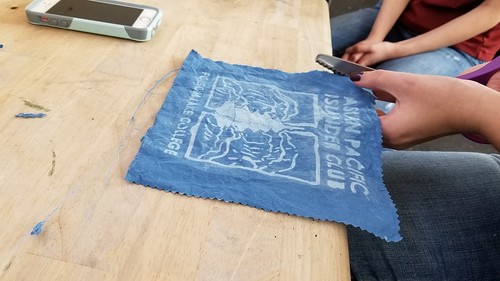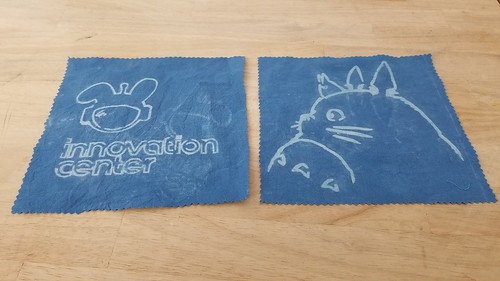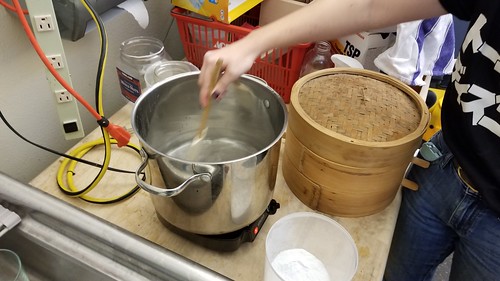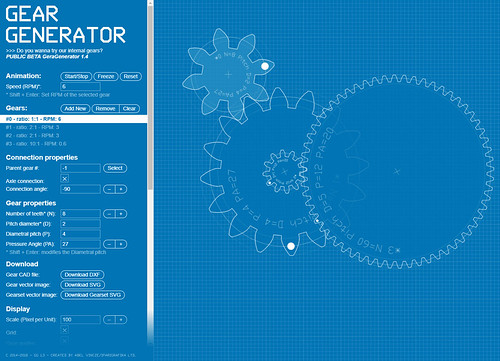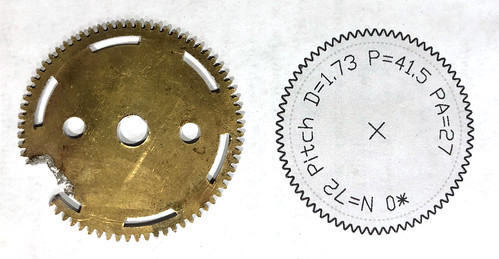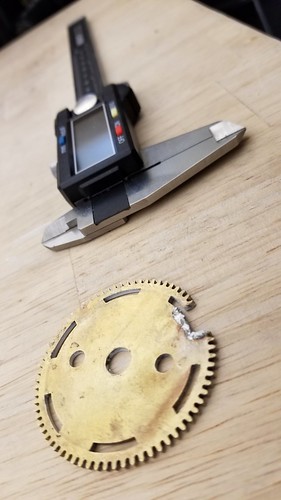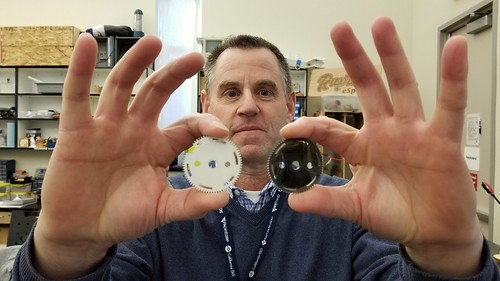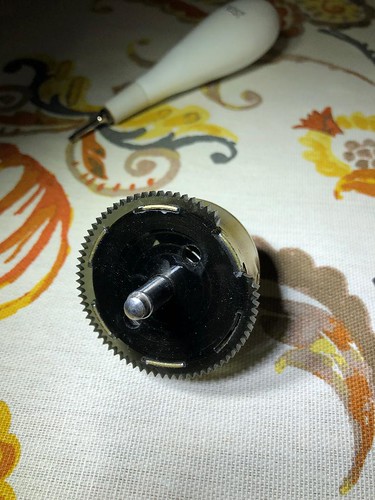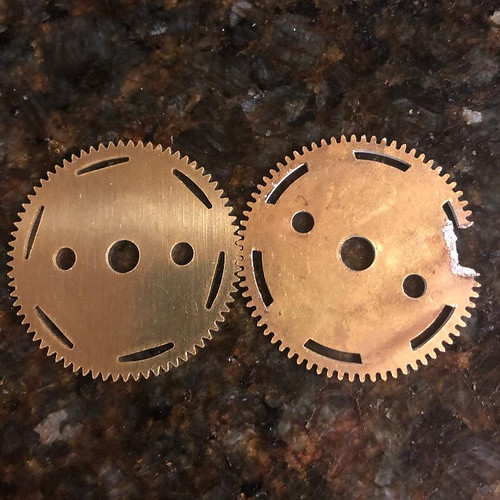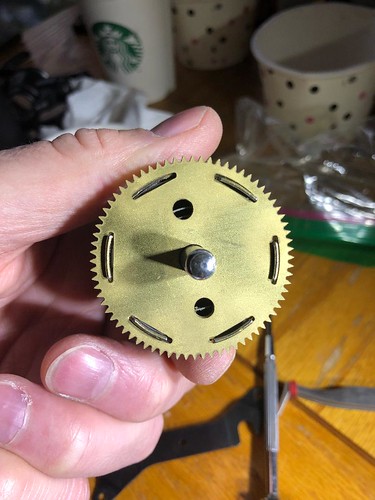DIY channels on YouTube are a source of inspiration, and lately I’ve been watching one in which the maker creates figures and environments inspired by Sylvanian Families.
https://youtu.be/_Ti2hTKZnmE
In one episode, the maker uses a DIY vacuum former (made from a plastic jar) to create little bottles. We have a commercial thermoformer in the lab – Sophie most recently used food safe plastic to create candy molds for our holiday party, and made this lovely Nova (our space bunny mascot) lollipop.
I thought it would be fun to prototype a little DIY version, and so set out designing it, starting with a simple box (using Makercase, certainly in the top 10 of most useful makerspace software) to which I added holes for the vacuum hose and the top surface. A couple of iterations later, all glued and clamped up.
Though I think it would have worked fine, I decided that the grid of vacuum holes needed to be smaller, so I altered the file in Illustrator and re-cut that piece with the laser cutter.
I hooked up the vaccum and gave it a try, sandwiching plastic between various frames and heating it with a heat gun with promising but not perfect results. What ended up working best was just heating the plastic in place with a heat gun while the vacuum was running.
Here’s a closeup shot of the resulting mold, which is a perfectly acceptable result for a quick protoype!







